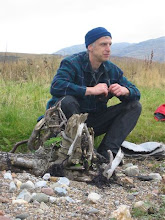
 Flanders Moss National Nature Reserve has just become been officially put on the tourist map this week when Stirling Council put up some new brown tourist signs. It has been a bit of a performance to get the signs up but now the reserve is sign posted from the B873 Aberfoyle road in Thornhill and the A811 from the Kippen roundabout. It wasn't easy to find the reserve before but now tourists and day visitors will have no problem getting to the car park.
Flanders Moss National Nature Reserve has just become been officially put on the tourist map this week when Stirling Council put up some new brown tourist signs. It has been a bit of a performance to get the signs up but now the reserve is sign posted from the B873 Aberfoyle road in Thornhill and the A811 from the Kippen roundabout. It wasn't easy to find the reserve before but now tourists and day visitors will have no problem getting to the car park.Why do we want brown signs ? Well Scottish Natural Heritage has invested a lot of money in the infrastructure of the reserve so that people can visit it, enjoy it, be inspired by it, learn about why it is special and find out what they can do to save this bog and others around the world. So it is important that people can find it easily. There are a large number of visitors to go along the main roads to the north and south of Flanders to and from Stirling and the Loch Lomond National Park and we would like to attract in some of them. Hopefully the surrounding villages will also benefit from these visitors when people go to them for refreshments and services.
The one possible problem is if we attract too many visitors that start to affect the reserve. But if this happens then we easily remove the brown signs to reduce the visitors again.








































